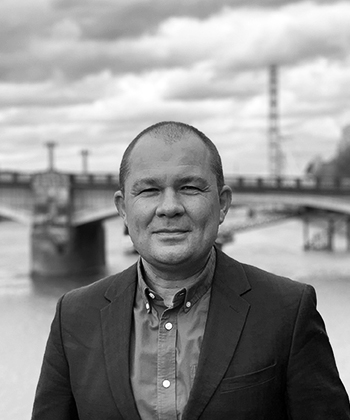Preston Bus Station: Celebrating 20th Century Architecture for the Benefit of Communities
This webinar is part of the RAIC 2022 Virtual Conference on Architecture, now available to stream!
Topics: Design
Length: 1 hour | What's Included: Video, Quiz, and Certificate of Completion
An icon of Brutalist architecture, Preston Bus Station is the UK’s largest building of its kind. With over 10,000 bus departures every week, it is a busy public building and one of the centres of life in the city. Long threatened with demolition, in 2015, John Puttick Associates won an international competition to refurbish the building and create a wider masterplan to re-connect it to the city centre. The project’s primary focus was rejuvenating this significant public building to benefit the local community. Previously isolated by a sea of bus parking, John Puttick Associates’ refurbishment reorients the building by prioritizing pedestrians over vehicles. Bus arrivals are consolidated to the east and a major new public square was created to the west connected to the city centre. Inside, the building has been rearranged so that generous new waiting areas face the square, and a 24-hour Coach Station has been created.
Reinstating the powerful 1960s design, John Puttick Associates pared down the interior and restored the original materials. The double-height concourse facade has been replaced with glazing and mullions matching the original profile. This is animated by a back-lit band and three-dimensional signage guiding visitors to their destination. Entry points are consolidated, and an information hall was established to provide a place for orientation. Benches were designed using Iroko reclaimed from the original construction, while new lighting has made the space safer and more welcoming. The project achieves several environmental goals with the re-use of an existing structure and encouraging public transport use. On its completion, the project was selected by both the BBC and The Observer as one of the architectural highlights of the year. The session will focus on the process and outcomes of restoring Preston Bus Station and broader themes prompted by the project.
Learning Objectives:
By the completion of this session, participants will be able to:
- Assess how a 20th-Century heritage asset can be revived to provide social and community value.
- Explain why transport buildings are important cultural and community spaces, which should be people-focused.
- Identify features of significance in a Brutalist concrete structure and devise technical solutions for their restoration.
- Develop design proposals that overcome the barriers presented by an historic structure, which include the challenge of connecting it with the surrounding cityscape.
Subject Matter Expert:
John Puttick
BA BArch ARB RIBA
Architect, John Puttick Associates
 |
John is an architect and the founder and director of John Puttick Associates. The practice’s work encompasses civic, community, cultural, transport and residential projects. John led the award-winning refurbishment of the iconic Brutalist Preston Bus Station, won through an international competition and opened to the public in 2018. Other key projects include Legacy Croydon Youth Zone in London, a £6 million new building which was completed in 2019, the interior refurbishment of the Mayflower Building in Manhattan as well as a number of residential projects in New York. He is currently working on a major retrofit of a series of Victorian warehouses in Grimsby, the UK and the extension of a Grade 2* Listed church in Brighton, UK. The practice’s first completed project was a gallery for emerging artists in Beijing, China. Before founding John Puttick Associates, John lived and worked in Beijing for six years. Moving to China in 2008, he opened Make Architects’ office in Beijing and was responsible for all aspects of the practice’s work in the region. Completed buildings include the Temple House Hotel and 47-storey Pinnacle One office tower in Chengdu, the Wanda Reign hotel in Wuhan, a new exhibition centre for the city of Wei Hai, the 23-storey Dunbar Place residential building in Hong Kong, and an art gallery within an industrial building also in Hong Kong. Previously at Make Architects in London John took a leading role in the redevelopment of 55 Baker Street, an existing 75,000sm office building that he saw from competition stage through to completion. Prior to this John worked for David Chipperfield Architects in London on a range of museum and cultural projects. These included the Hepworth Wakefield, an art gallery and community hub which in 2017 won the Art Fund Museum of the Year. Other projects include a major art museum in Ansaldo, Italy and the City of Justice in Barcelona, Spain as well as a number of residential buildings. John studied architecture at The University of Nottingham and The Bartlett, University College London where he subsequently taught a Diploma unit. He qualified as an architect in 2003. Since founding John Puttick Associates, John has exhibited and spoken about the practice’s work that has also been widely published. A book of his drawings is held in the collection of the Museum of Modern Art in New York. |
Pricing A-La-Carte
This is a recording of a live event.
This webinar is part of a series! See more like this here.




